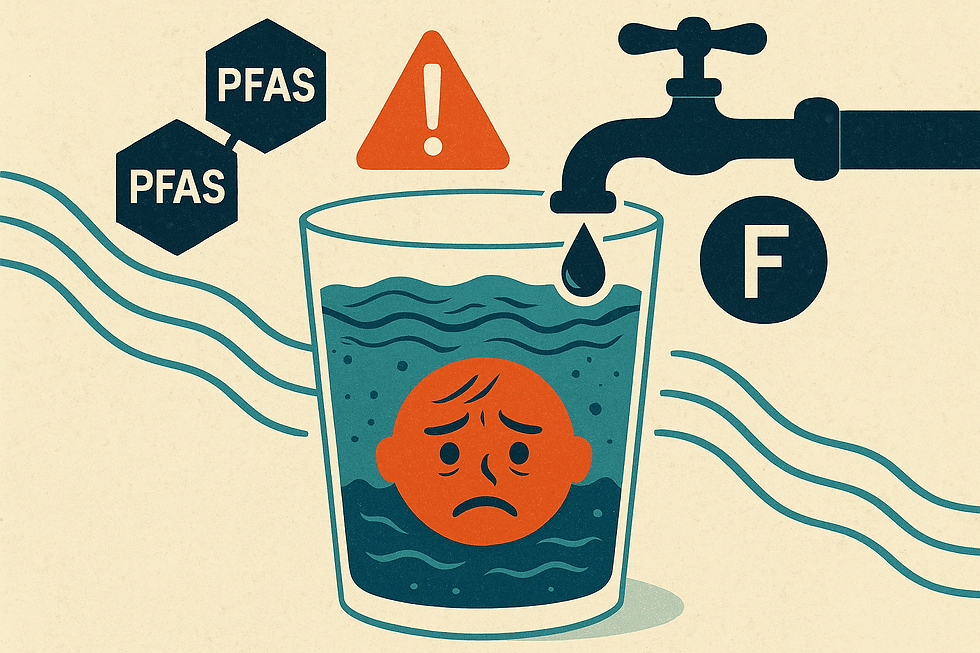Rebuilding America’s Water Future: The Clean Water Movement You Should Know About
- Everfilt® Admin

- Oct 9
- 4 min read

Water is life, but for millions of people in the U.S., clean, safe water still isn’t guaranteed. Aging pipes, outdated systems, and pollution have left too many communities behind. The good news? Across the country, a massive clean water movement is happening right now, and it’s reshaping how we think about water, infrastructure, and justice.
From billion-dollar federal investments to local restoration projects, America’s finally treating water like the essential resource it is. Let’s dive into what’s changing, who’s leading the charge, and how you can get involved.
Why Clean Water Is Having a Moment
Water doesn’t usually make headlines until something goes wrong. But clean water is connected to everything: health, housing, climate, and even the job market. When pipes leak, rivers get polluted, or tap water becomes unsafe, the ripple effects hit everyone.
Investing in clean water isn’t just an environmental issue; it’s a community investment.
Fixing old infrastructure creates local jobs, strengthens small towns, and ensures that no one has to question the safety of what’s coming out of their faucet.
Simply put: clean water is the foundation for thriving communities. And we’re finally starting to treat it that way.
Big Moves: The Federal Programs Making Waves
The Clean Water State Revolving Fund (CWSRF)
You’ve probably never heard of it, but the Clean Water State Revolving Fund is quietly one of the most powerful tools in U.S. environmental history. It’s a funding program that helps states upgrade wastewater and stormwater systems, everything from sewer repairs to wetland restoration. Since its launch, it’s backed thousands of projects that keep pollution out of rivers and oceans.
The Drinking Water State Revolving Fund + WIFIA
Think of the Drinking Water State Revolving Fund (DWSRF) as the CWSRF’s twin, but for drinking water. It helps communities modernize treatment plants and replace outdated pipes. And then there’s WIFIA, the Water Infrastructure Finance and Innovation Act, which gives low-cost loans for big, transformative projects.
Thanks to the Bipartisan Infrastructure Law, both programs just got a major glow-up. Billions in new funding are flowing into water projects, the biggest federal investment in clean water ever.
Focusing on Equity & Access
Historically, small towns, rural areas, and tribal nations have struggled to get funding. That’s finally changing. New programs are directing resources to communities that have been overlooked for decades, ensuring that clean water isn’t a privilege, it’s a right.
The Fight Against Lead: A National Priority
Remember Flint? That crisis made it painfully clear that lead pipes are still a huge problem. Millions of homes across the country still rely on old lead service lines.
Enter the EPA’s updated Lead and Copper Rule. It’s a game-changer, requiring utilities to find and replace lead pipes, improve testing, and keep residents in the loop. The goal: zero lead exposure, period. This isn’t just a public health issue; it’s about rebuilding trust in our water systems.
Local Wins: Progress That Deserves the Spotlight
Flint, Michigan — From Crisis to Comeback
Flint’s water disaster changed the national conversation about environmental justice. But the city has made incredible progress since. Nearly every lead service line has been replaced, and Flint’s water now meets federal standards. The work continues, but Flint’s journey has become a model for transparency and community resilience.
The Chesapeake Bay — A Lesson in Teamwork
The Chesapeake Bay is America’s largest estuary, and for decades, it was in trouble. Now, six states are working together through the Chesapeake Bay Program to restore wetlands, reduce pollution, and protect wildlife. It’s proof that when states, farmers, and conservationists collaborate, real change happens.
California — Innovation Under Pressure
Between droughts, contamination, and population growth, California has had to get creative. The state is leading with technology and policy, investing in water recycling, clean drinking water programs for small towns, and innovative solutions for communities hit hardest by pollution. California’s water game is all about resilience and equity.
Nonprofits & Local Changemakers
Not all progress comes from Washington. Across the country, nonprofits and grassroots organizations are driving clean water innovation at the community level. Groups like Water.org and local watershed alliances are helping homeowners replace wells, clean up rivers, and advocate for fair water access. These groups are proof that real change starts small, and often, right in our own backyards.
The Work Ahead
We’ve made progress, but the mission’s far from over. Here’s what still needs to happen:
Replace every lead pipe. No one should have to wonder if their tap water is safe.
Crack down on new contaminants. PFAS (“forever chemicals”) are showing up everywhere. We need better treatment tech and stronger policies.
Fund maintenance, not just construction. Building new systems is great, but long-term upkeep keeps them running.
Support small utilities. Rural and tribal systems need funding, training, and staff to stay operational.
The next phase of clean water work isn’t just about money; it’s about staying committed.
How You Can Help
Clean water isn’t just a government project; it’s a community effort. Here’s how to get involved:
Check your local water report. Know what’s in your water and what your utility is doing to improve it. Volunteer locally. Join a watershed cleanup, plant trees, or support groups that restore local waterways. Speak up. Public hearings and budget votes matter; your voice helps keep clean water funding a priority. Vote for water. Support policies and leaders who take water quality seriously.
Every action, even the small ones, helps protect the water we all depend on.
America’s clean water movement is more than pipes and treatment plants; it’s about people. It’s about justice, health, and future generations. From Flint to California, we’re seeing what’s possible when communities, scientists, and policymakers work together.
Water connects us all. And right now, we’re finally connecting the dots, turning crisis into progress and making clean water a promise kept, not a privilege.



